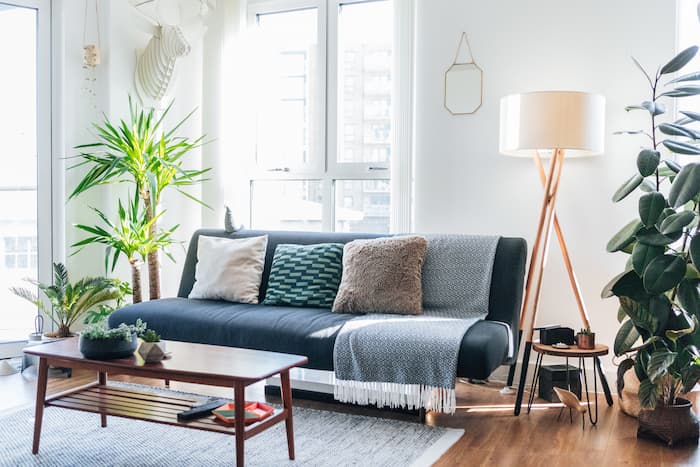Related articles
- 8 simple ways to maintain your property value
- Extend or move: How much does an extension cost?
- Post-renovation property valuation
- Tips for renovating your home
- How do solar panels work?
- The home renovation capitals of Australia
- 11 of the Best Indoor Plants for Serial Plant Killers
- Lawn Care Tips for New Homeowners
Disclaimer: This information is general in nature only. While Budget Direct has endeavoured to ensure the information we’ve relied on is accurate and current, we do not guarantee it. Budget Direct accepts no liability for this information.
You don’t need to spend lots of money or undertake major renovations to make your home more attractive to buyers.
In fact, some of the most effective ways to make your home more appealing to prospective buyers are also the simplest.
Here are 7 easy improvements you could make to increase the value of your home before putting it on the market.
See more of Budget Direct’s home improvement guides.
Related article: 8 simple ways to maintain your property’s value
Exterior

Spruce up the outside of your house
A buyer’s first impressions of a house (its ‘kerb appeal’) are crucial, so make sure the outside is presentable.
This means clean gutters, bright roof tiles, a trimmed lawn, gleaming windows, a neat garden, and a tidy, welcoming entry area.
Your boundary fence and house exterior (if wooden) should be freshly painted. And it’s not a bad idea to give your concrete driveway and any garden tiles a thorough clean with a pressure hose.
Make sure the house’s side pathways and backyard are neat too; a bit of fresh bark or gravel in a tired-looking garden bed, for example, can make a noticeable difference.
Insulate external walls
Buyers may ask – how does external wall insulation increase your house value?
Insulating your external walls can save up to a quarter of heat transfer in and out of your home.
This means that not only can it increase the value of your home, but it also provides a more comfortable and energy efficient environment for any potential buyers.
Interior

Re-paint your walls and ceilings
Interior walls and ceilings should always get a fresh coat of paint before you try to sell your home.
You may not spend a lot of time staring at your own ceilings, but you can rest assured that prospective buyers will.
A fresh coat of interior wall paint is one of the simplest but most effective improvements you can make to your home, which can appear newer as a result.
Use brighter shades if you want a fresher look, and make sure the baseboard trim is looking good too.
If you have the time and inclination to do the painting yourself, this will certainly be cheaper than hiring professionals.
Re-grout tiles and update old fittings
If your bathroom or kitchen taps are rusty and crusty and your shower head looks like a throwback to the 1970s, new fittings might be in order.
Pay attention to the condition of your tiles, too — especially around sinks and shower cubicles.
Re-grouting the tiles is a quick and easy job almost anyone can perform. This small step can make old tiles look practically new again. Use bleach to get rid of pesky mould; new home buyers love a pristine-looking bathroom.
They also love a bathroom or kitchen that is stylish so adding elements like a versatile showerhead, modern handles, a new benchtop, or a sliding bathroom door will help to open up the space.
Experiment with new lighting
Sometimes, all you need to improve a room’s appearance is brighter or more flattering lighting.
If a particular room looks dingy and drab, add an extra light or a brighter lampshade to bring the space to life.
Light bulbs are cheap, so try a few different varieties to see what works best in different parts of the house.
It’s easy to accentuate the most impressive parts of your house simply by changing the angle or intensity of existing lighting.
Add an extension
If you have the space then adding an extension to your home can significantly increase its value.
When deciding between extending or moving you should always consider the cost of an extension and whether you can afford any additional costs (heating, gas and piping, materials etc.).
There are pros and cons that come with either decision so it’s important to choose wisely.
And you can breathe new life into a dreary corner by substituting a bland lighting fixture with something more interesting.
Remove excess belongings
Many of us own a lot more stuff than we really need. These surplus items can make an otherwise attractive house look quite messy.
Prospective buyers want to be able to visualise their own furniture and belongings inside your house and this is much harder to do when you have piles of personal junk crowding each room.
So, when the time comes to sell your house, you should try to reduce the volume of your possessions.
The effect you’re after is an open, tidy appearance, clean lines, plenty of space and easy movement from room to room. Prospective buyers will certainly appreciate it.
With all of these tips, you could potentially add thousands of dollars to the perceived value of your home.
And once you’re ready for it, a pre- and post-renovation property valuation will show how these improvements can impact the value of your home.
Related articles
- 8 simple ways to maintain your property value
- Extend or move: How much does an extension cost?
- Post-renovation property valuation
- Tips for renovating your home
- How do solar panels work?
- The home renovation capitals of Australia
- 11 of the Best Indoor Plants for Serial Plant Killers
- Lawn Care Tips for New Homeowners



